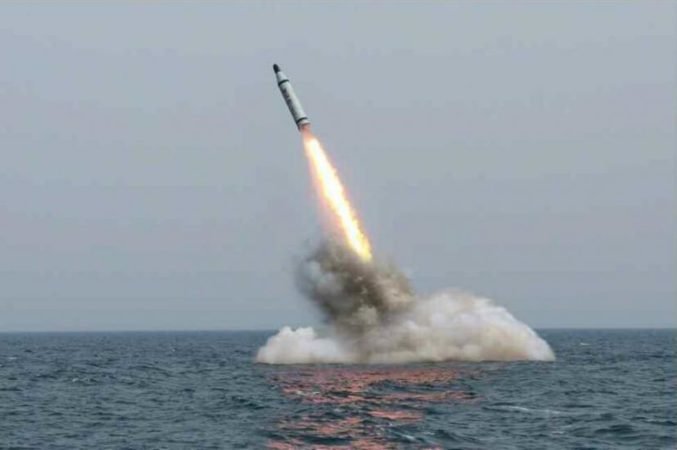Analysing North Korean Submarine-launched ballistic missile (SLBM)

North Korea said on Thursday it had successfully test-fired a new submarine-launched ballistic missile (SLBM) from the sea to contain external threats and bolster self-defence, ahead of fresh nuclear talks with the United States.
The launch on Wednesday was the most provocative by North Korea since it resumed dialogue with the United States in 2018 and a reminder by Pyongyang of the weapons capability it has been aggressively developing, including intercontinental ballistic missiles, analysts said.
North Korean leader Kim Jong Un “sent warm congratulations” to the defence scientists who conducted the test, state news agency KCNA said, indicating he did not attend the launch as he has at previous tests of new weapons systems.
The new type of SLBM, called Pukguksong-3, was “fired in vertical mode” in the waters off the eastern city of Wonsan, KCNA said, confirming an assessment by South Korea’s military on Wednesday that the missile was launched on a lofted trajectory.
“The successful new-type SLBM test-firing comes to be of great significance as it ushered in a new phase in containing the outside forces’ threat to the DPRK and further bolstering its military muscle for self-defence,” KCNA said.
The test “had no adverse impact on the security of neighbouring countries,” KCNA said but gave no other details about the launch.
South Korea expressed strong concern and Japanese Prime Minister Shinzo Abe condemned the launch, saying it was a violation of U.N. Security Council resolutions.
North Korea rejects U.N. Security Council resolutions that ban Pyongyang from using ballistic missile technology, saying they are an infringement of its right to self-defence.
Talks aimed at dismantling North Korea’s nuclear and missile programmes have been stalled since a second summit between Kim and U.S. President Donald Trump in Vietnam in February broke down in disagreement over nuclear disarmament.
North Korea fired the missile hours after announcing it would resume talks with the United States by holding working-level negotiations on Oct. 5.
Nuclear-Capable
The Pukguksong-3 appeared to be a new design that has enhanced range and stability compared with a version tested in 2016, three analysts said.
It was probably launched from a test platform and not a submarine, which would be the final stage of testing, said Kim Dong-yub, a military expert at Kyungnam University’s Institute of Far Eastern Studies in Seoul.
State news agency KCNA released photos and a report in July of leader Kim Jong-Un inspecting a large, newly built submarine, but an unnamed South Korean military source said on Thursday that the submarine appears to be still incomplete, Yonhap news agency reported.
Leader Kim Jong Un’s absence at the test is “extremely unusual,” Kyungnam University’s Kim said, probably meant to contain the political fallout that could result in the upcoming talks falling apart before they even start.
On Wednesday, South Korea’s military said the missile flew 450 km (280 miles) and reached an altitude of 910 km (565 miles). It was likely a Pukguksong-class weapon, as the North’s earlier submarine-launched ballistic missiles (SLBMs) under development were known.
South Korean Defence Minister Jeong Kyeong-doo said the Pukguksong, or Pole Star in Korean, would have had a range of about 1,300 km (910 miles) on a standard trajectory.
North Korea had been developing SLBM technology before it suspended long-range missile and nuclear tests and began talks with the United States that led to the first summit between Kim and Trump in Singapore in June 2018.
The latest version of the Pukguksong may be the longest-range North Korean missile that uses solid fuel and the first nuclear-capable missile to be tested since November 2017, Ankit Panda of the U.S.-based Federation of American Scientists said.
North Korea has been developing rocket engines that burn solid fuel, which has advantages in military use compared with liquid fuel because it is stable and versatile, allowing it to be stored in missiles until they are ready for launch.


















